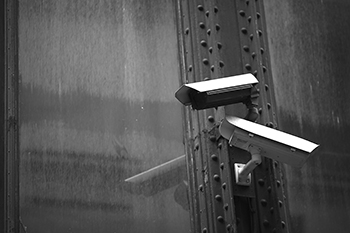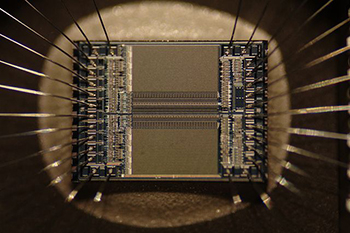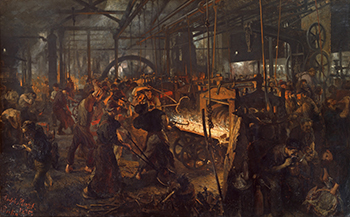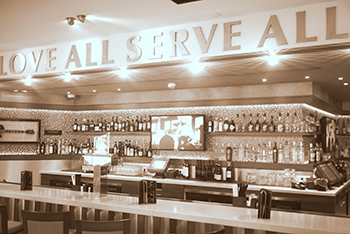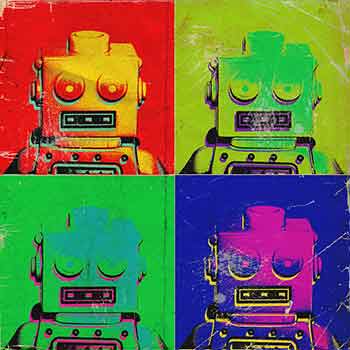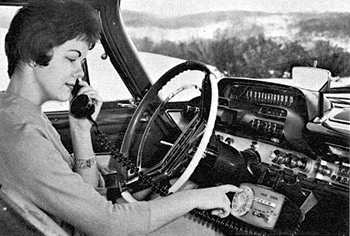Jon Bruner
Robert Brunner on designing and building great products
The O’Reilly Hardware Podcast: The critical role of design in creating iconic products and brands.
Subscribe to the O’Reilly Hardware Podcast for insight and analysis about the Internet of Things and the worlds of hardware, software, and manufacturing.
Our expectations for industrial design have risen immeasurably in the last decade. Think of any piece of consumer electronics from 2005—a BlackBerry, for instance—and you’ll think of something that was encased in plastic painted silver to imitate metal, with a too-light heft and a rattle when shaken.
Now, nearly every successful piece of consumer hardware is the result of careful design and exquisite manufacturing. Apple deserves a great deal of credit for that shift by resetting the baseline with the iPhone in 2007, but new tools and processes have played an important role as well. Digital design has become easy and sophisticated, and contract manufacturers can do spectacular things with glass, aluminum, and semiconductors that were nearly impossible just a few years ago.
Our guest on this week’s episode of the O’Reilly Hardware Podcast is Robert Brunner, a founder of this new era of design. Brunner was director of industrial design at Apple from 1989 to 1996, overseeing the design of the PowerBook. He was the chief designer of Beats by Dr. Dre, the design-driven line of headphones that Apple acquired for $3 billion last year. And he’s the founder of Ammunition, which has worked with startups and large companies on a wide range of innovative consumer products.
Ari Gesher and Kipp Bradford on security and the Internet of Things
The O’Reilly Hardware Podcast: Evolving expectations for privacy.
Subscribe to the O’Reilly Hardware Podcast for insight and analysis about the Internet of Things and the worlds of hardware, software, and manufacturing.
In this episode of our newly renamed Hardware Podcast, I talk with Ari Gesher, engineering ambassador at Palantir Technologies, and Kipp Bradford, research scientist at the MIT Media Lab.
Gesher is the co-author of The Architecture of Privacy: On Engineering Technologies that Can Deliver Trustworthy Safeguards. Bradford is co-author of Distributed Network Data: From Hardware to Data to Visualization, and he’s spoken twice at Solid.
Discussion points:
- The difference between security and privacy
- Ari’s notion of what it means to be “polite” in a world where everything is recorded
- The need and rationale for standards and protocols for IoT devices
Marcelo Coelho and Colin Raney on 3D printing and the digital manufacturing revolution
The O’Reilly Solid Podcast: Lessons from the Pop-up Factory.
Subscribe to the O’Reilly Solid Podcast for insight and analysis about the Internet of Things and the worlds of hardware, software, and manufacturing.
In this episode of the Solid Podcast, David Cranor and I talk with Marcelo Coelho, creative director of Marcelo Coelho Studio, and Colin Raney, chief marketing officer at Formlabs.
Coelho and Raney worked with Cranor on the Pop-up Factory, a production line that manufactured connected devices on the floor of the Solid 2015 conference. The four of us reviewed the process of spinning up the factory (which took just two months from beginning to end), and the impact of live fabrication on attendees at the conference.
Discussion points:
- Manufacturing as a creative process, and as an input for designers
- How 3D printing reduces iteration time and enables design and production to occur simultaneously
- Manufacturing as deployment
- Why the Pop-up Factory is analogous to the Hollywood model of film production
Robert Bodor on digital fabrication
The O’Reilly Solid Podcast: Software intelligence in the manufacturing process.
Subscribe to the O’Reilly Solid Podcast for insight and analysis about the Internet of Things and the worlds of hardware, software, and manufacturing.
In this episode of the Solid Podcast, David Cranor and I talk with Robert Bodor, vice president and general manager for the Americas at Proto Labs, a rapid-prototyping service that’s been able to digitize large parts of the fabrication process.
Discussion points:
- Proto Labs’ contribution to the Pop-Up Factory at the Solid 2015 conference
- How Proto Labs infused software into the injection molding process, enabling 24-hour turnaround on tooling
- 3D printing vs. injection molding (that old battle)
- Parts of the process that defy automation
- The pros and cons of in-house prototyping
Yancey Strickler on Kickstarter and public benefit corporations
The O’Reilly Solid Podcast: Kickstarter’s CEO on different models for viewing a company’s success.
Subscribe to the O’Reilly Solid Podcast for insight and analysis about the Internet of Things and the worlds of hardware, software, and manufacturing.
Kickstarter is one of just a handful of large companies that have become public benefit corporations — committing themselves legally to social as well as financial goals.
In making the transformation, Kickstarter’s leaders have taken a pragmatic, active position in promoting social good — neither purely philanthropic nor purely profit driven.
In this episode of the Solid Podcast, David Cranor and I talk with Kickstarter’s co-founder and CEO, Yancey Strickler, about his decision to take the company through the public benefit process and his promise not to go through an IPO.
Strickler will be among the speakers at the Next:Economy summit, November 12-13, 2015, in San Francisco.
Discussion points:
- Kickstarter’s reasoning behind its decision not to go public. Why not just sell the company and devote the proceeds to charity?
- The difference between a B corp and a public benefit corporation
- The “public good” principles in Kickstarter’s Benefit Corporation charter
- Determining metrics that can quantify public benefit goals
- Strickler’s thoughts on how Kickstarter’s PBC designation might influence a corporate model “different than hyper-growth, hyper-capitalist models that aren’t good for anyone other than people investing money”
Tobias Kinnebrew on robots as paint brushes
The O’Reilly Solid Podcast: How using robots for artistic purposes changes the way we perceive art.
Subscribe to the O’Reilly Solid Podcast for insight and analysis about the Internet of Things and the worlds of hardware, software, and manufacturing.
The short film Box caused a sensation in 2013 by effortlessly blending industrial robots and projection mapping — physical and digital. Bot & Dolly, the studio behind Box, specialized in robotic cinematography until it was bought by Google in 2013, becoming part of Google Robotics.
Sometimes overlooked amid the spectacular effects it developed in-house was the significance of Bot & Dolly’s software platform: it was an abstraction layer that worked as a plug-in for Autodesk’s Maya design software, putting otherwise arcane industrial robots in the hands of any production designer who could wield a mouse.
In this episode of the Solid Podcast, David Cranor and I talk with Tobias Kinnebrew, strategist at Google Robotics and formerly the director of product strategy at Bot & Dolly and principal creative director for HoloLens at Microsoft. Read more…
Julia Ko on developing a different kind of smartphone
The O’Reilly Solid Podcast: Entrepreneurship, niche product development, and spotting business opportunities.
Subscribe to the O’Reilly Solid Podcast for insight and analysis about the Internet of Things and the worlds of hardware, software, and manufacturing.
Many of the hardware creators we speak with come into their work through the enthusiast route: they start with an engineering problem they want to solve or a piece of technology they think is interesting, then look for an application that would support a business.
Julia Ko, our guest on this week’s episode of the Solid Podcast, started her company SurePod a very different way. She saw the business opportunity first, studying wholesale mobile contracts and the sales networks that distribute medical devices, and she developed a plan for a simplified mobile phone for older people. Only then did she learn the technical aspects of hardware production.
In this episode, we talk about Ko’s development as an entrepreneur, the challenge of creating a product for which you aren’t the target audience, and the best mobile phone carrier (Ko says it’s AT&T).
Joe Biron on what’s new about the IoT
The IoT entails a flexible platform approach to accommodate new applications that haven’t been conceived yet.
Subscribe to the O’Reilly Solid Podcast for insight and analysis about the Internet of Things and the worlds of hardware, software, and manufacturing.
 Machines have been able to talk to each other and to computers for a long time, so what’s the big deal with the IoT? That’s the first question I ask Joe Biron, my guest on this episode of the Solid Podcast. Biron is VP of IoT technology at ThingWorx, a PTC business that offers a platform for rapid development of Internet of Things applications.
Machines have been able to talk to each other and to computers for a long time, so what’s the big deal with the IoT? That’s the first question I ask Joe Biron, my guest on this episode of the Solid Podcast. Biron is VP of IoT technology at ThingWorx, a PTC business that offers a platform for rapid development of Internet of Things applications.
The answer, says Joe, is that where the machine-to-machine (M2M) model is stovepiped and specialized, the IoT entails a platform approach. Machines on the IoT are abstracted, which makes decentralized application development possible. And it’s more flexible: the platform will eventually be able to accommodate new applications that haven’t been conceived yet. Read more…
Buddy Michini on commercial drones
The O’Reilly Solid Podcast: Drone safety, trust, and real-time data analysis.
Subscribe to the O’Reilly Solid Podcast for insight and analysis about the Internet of Things and the worlds of hardware, software, and manufacturing.
In our new episode of the Solid Podcast, we talk with Buddy Michini, CTO of Airware, which makes a platform for commercial drones. We cover some potentially game-changing research in localization and mapping, and onboard computational abilities that might eventually make it possible for drones to improve their flight intelligence by analyzing their imagery in real time.
Among the general public, the best-understood use case for drones is package delivery, which obscures many other promising applications (and perhaps threatens to become the Internet-connected refrigerator of autonomous aircraft). There’s also widespread (and understandable) fear of drones. “We need to make drones do things to improve our lives and our world,” Buddy says. “That will get people to accept drones into their lives a little bit more.” Read more…
Jim Stogdill on cloud-based typewriters and smart watches
The O’Reilly Solid Podcast: Distractions, wearables, and reference peanut butter.
Subscribe to the O’Reilly Solid Podcast for insight and analysis about the Internet of Things and the worlds of hardware, software, and manufacturing.
In this episode of the Solid Podcast, David Cranor and I talk with Jim Stogdill, one of the key figures behind the launch of our Solid conference, about some of the cool pieces of hardware that we’ve come across recently.
Stogdill starts off with the Hemingwrite, an ultra-simplified Internet-connected typewriter for writers who need to isolate themselves from distraction. It duplicates, at significant expense and austerity, a small part of any modern computer’s functionality. The Hemingwrite’s existence — along with that of its oversubscribed Kickstarter campaign — demonstrates the new economics of hardware: development costs have fallen enough that clever entrepreneurs can isolate and solve niche consumer problems like needing a browserless computer because you sometimes don’t want to be distracted by your browsered computer. Also, I’d like one. Read more…


